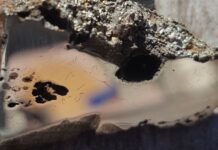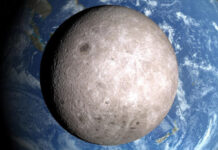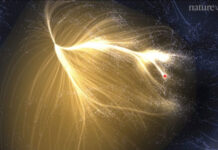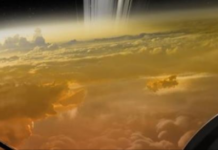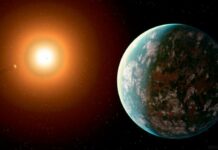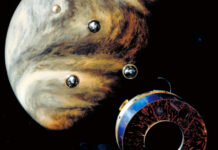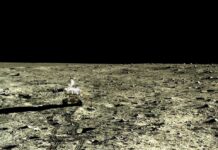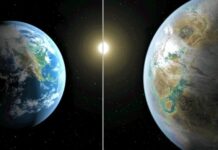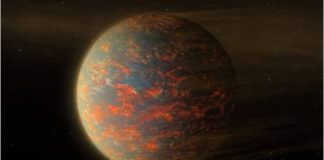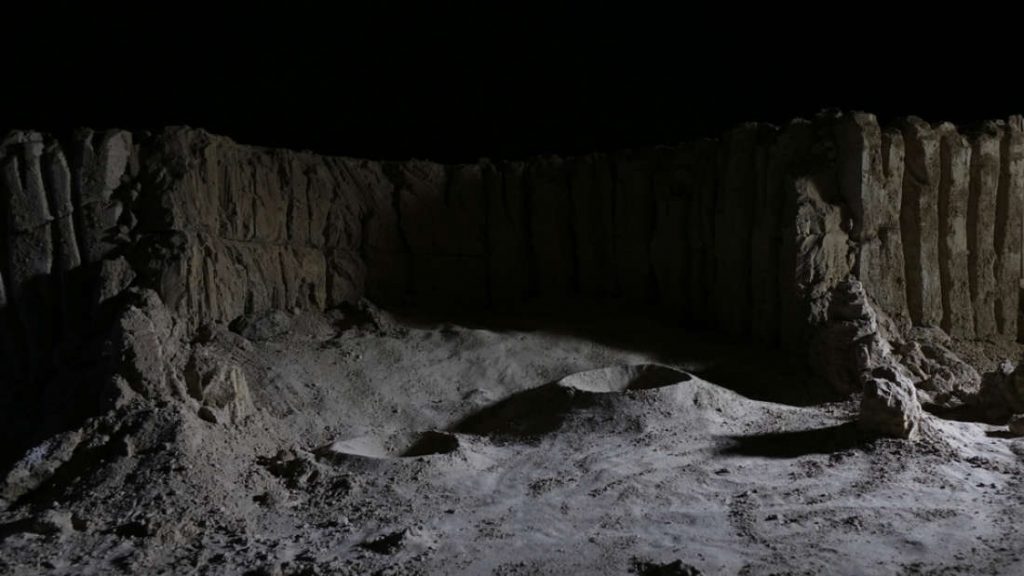
A new photo released by China’s Lunar Exploration Program (CLEP) from its Yutu-2 lunar rover has provided a more detailed look at that unidentified substance discovered on the Moon earlier this year.
The “gel-like” substance was first discovered on the far side of the Moon in July and the space organization first released photos in September. It was identified as having a different coloration from the soil surrounding it and was described as having a “mysterious luster”.
The new photos taken by the Yutu-2 lunar rover’s main camera again shows the center of a crater with material that is colored differently than the surrounding sediment and has bright spots, as first reported by Space.com. However, a new analysis suggests that the mysterious substance isn’t that peculiar after all. The publication reports that the material is similar to impact glass found during the 1972 Apollo 17 mission described as “dark, broken fragments of minerals cemented together and black, shiny glass”. Such material can be created when meteors or other space objects impact the Moon’s, or Earth’s for that matter, surface.
IFLScience spoke with Daniel Moriarty of the Goddard Space Flight Center in Maryland who analyzed and processed the image. He pointed out that while the materials in the center of the image are “definitely darker than their immediate surroundings,” it is difficult to determine how unique they are given the quality of the image. Though it is difficult to tell from the compressed image, Moriarty says that he suspects there were some issues with the detector saturation and that the image appears artificially bright due to the “lack of photometric correction.” The pixels appear to be associated with bright areas, either from compositional differences or specular reflections.
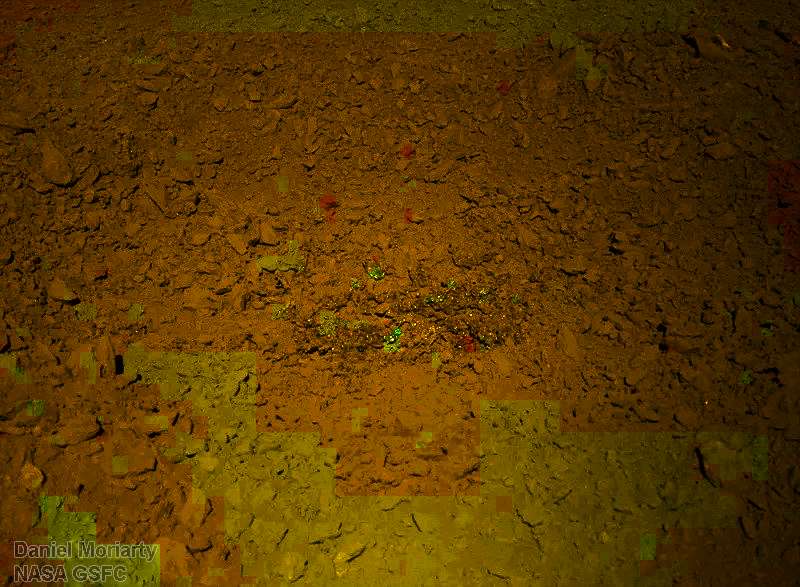
“It seems like there might be some non-linear detector behavior (or image compression issue) that ends up over-emphasizing some of these bright pixels, given the fairly strange-looking pattern,” Moriarty told IFLScience. “So, I think the take away from this is that there are bright spots, but they may not be as strange as they first appear.”
But what is the material? Moriarty says that the fragments are medium-sized and similar to the average material around. They consist of discrete fragments with sharp boundaries but do not appear to be dusty or coated in a fine grain. Generally speaking, most are less angular and more rounded.
“What this tells us is that this material has a similar history as the surrounding material. It was broken up and fractured by impacts on the lunar surface just like the surrounding soil. It may have been excavated by the crater-forming impact, or it may be a breccia,” explained Moriarty. “But we’re definitely looking at a rock – this much is pretty conclusive.”
This tells us that the substance is one of two heterogenous rock possibilities. The first possibility may be glassy, impact breccia – angular fragments of rocks that have been cemented together – that could have formed during the formation of the small crater. In this case, the material may be pre-existing and could include more basalts, highlands crust, glass, and impactor material.
A second possibility could be that the material is basaltic or an igneous rock known as gabbroic rock. Extrusive basalts cool fairly quickly and result in fine grain sizes that wouldn’t show up in the image, depending on the actual scale.
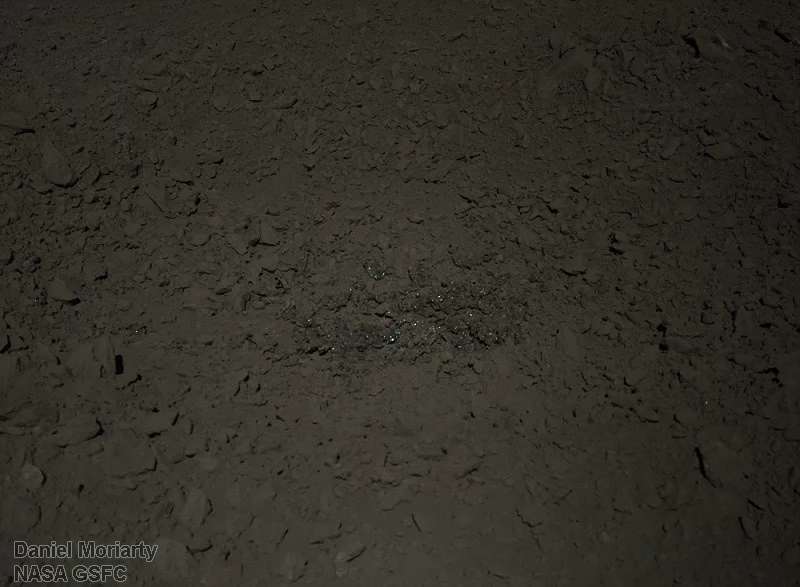
[H/T Space.com]
